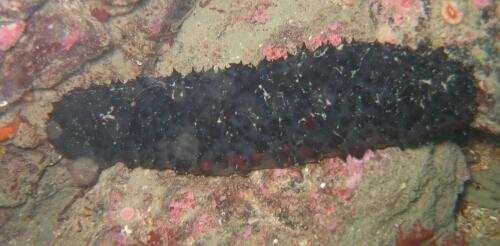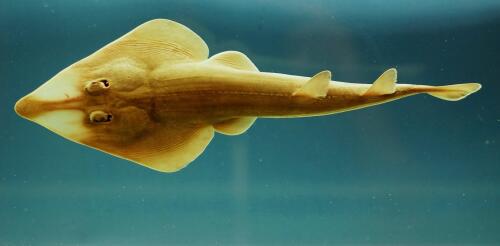Marine biodiversity
Sea cucumbers, scavengers of the seafloor that resemble the cylindrical vegetable, have been consumed as a delicacy in Asia for centuries. But in recent decades, they’ve been severely overharvested to a point that they are now quite rare. New research I helped conduct suggests their repopulation could play an important role in protecting and revitalizing another type of endangered marine organism: corals. Coral reefs are in decline around the world partly due to diseases, some of which are associated with sediment on the seafloor. In several field experiments involving corals in Moorea, French Polynesia, and around Palmyra Atoll, research scientist Cody Clements and I, along with two other colleagues working on marine microbes, found that sea cucumbers grazed and consumed bacteria in the sediment, and that sea cucumber presence prevented pathogens from sickening co-occurring corals. We learned this by either removing sea cucumbers from certain sand patches, while leaving...
Humans have sailed the world’s oceans for thousands of years, but they haven’t all reached port. Researchers estimate that there are some three million shipwrecks worldwide, resting in shallow rivers and bays, coastal waters and the deep ocean. Many sank during catastrophes – some during storms or after running aground, others in battle or collisions with other vessels. Shipwrecks like the RMS Titanic, RMS Lusitania and USS Monitor conjure tales of human courage and sacrifice, sunken treasure and unsolved mysteries. But there’s another angle to their stories that doesn’t feature humans. I have studied the biology of shipwrecks in the United States and internationally for 14 years. From this work, I have learned that shipwrecks are not only cultural icons but can also be biological treasures that create habitat for diverse communities of underwater life. The USS Monitor, which sank off Cape Hatteras, North Carolina, in a...
Two miles below the ocean surface off Monterey, California, warm water percolates from the seafloor at the base of an underwater mountain. It’s a magical place, especially if you’re an octopus. In 2018, one of us, Amanda Kahn, was aboard the research vessel E/V Nautilus when scientists discovered the “Octopus Garden.” Thousands of pearl octopuses (Muusoctopus robustus) were curled up into individual balls in lines and clumps. As Nautilus Live streamed the expedition online, the world got to share the excitement of the discovery. We now know why these amazing creatures gather at this and other underwater warm springs. Scientists with the Monterey Bay Aquarium Research Institute take viewers on a journey to Davidson Seamount in a video narrated by Jim Barry, an author of this article. Credit: © MBARI. In a new study involving scientists from several fields, we explain why octopuses migrate to the Octopus Garden....
“Shark!” When you hear this word, especially at the beach, it can conjure up images of bloodthirsty monsters. This summer, my colleagues and I are eager to help the public learn more about these misunderstood, ecologically important and highly threatened animals and their close relatives – rays and chimaeras. As a marine biologist focused on conserving sharks, I want people to know that an estimated one-third of them are at risk of extinction. Second, there’s an amazing variety of species in an astounding variety of shapes sizes and colors, and many of them get very little attention. Here is an introduction to a group of fishes that are at extremely high risk of extinction, and also delightfully weird: the rhino rays, named for their elongated noses. Scientists tag endangered sawfish off Florida’s west coast to identify and protect their habitats and educate the public about them. Motley shapes Rhino rays a...



